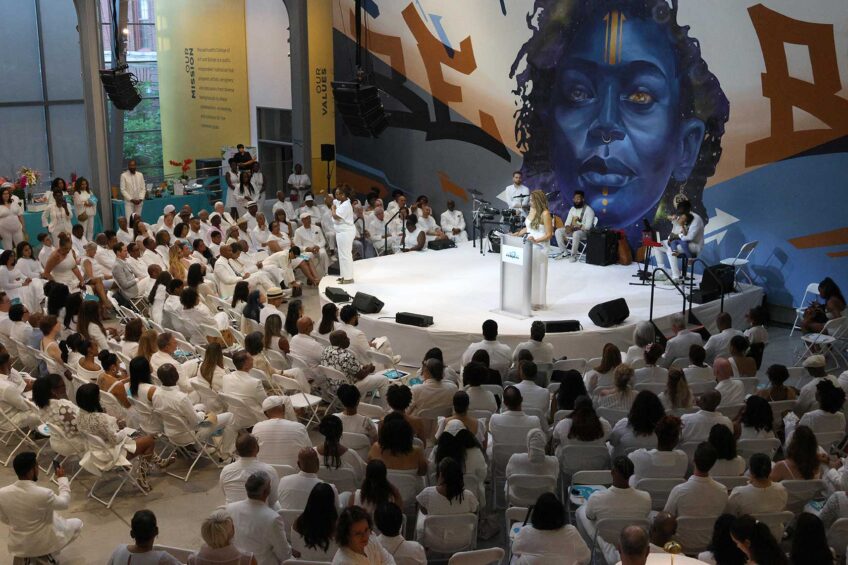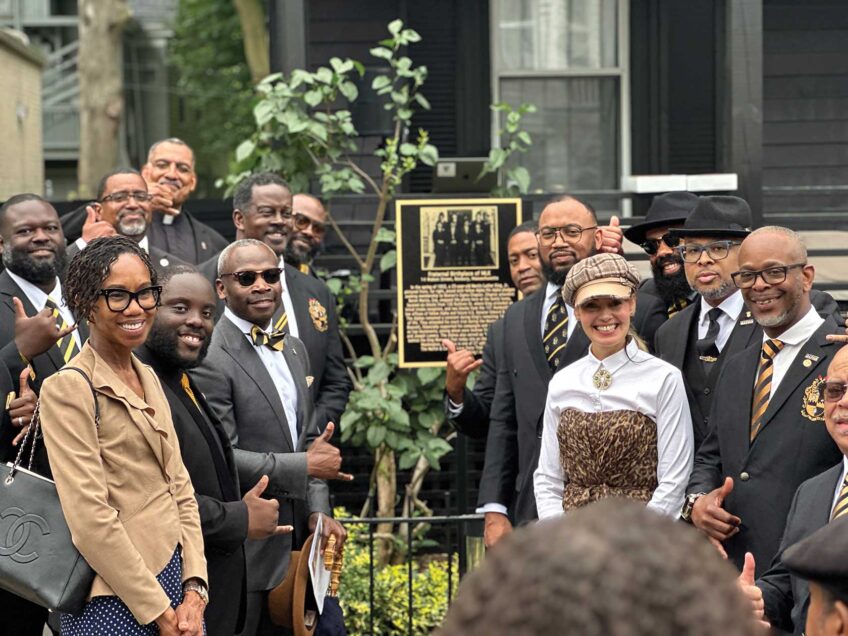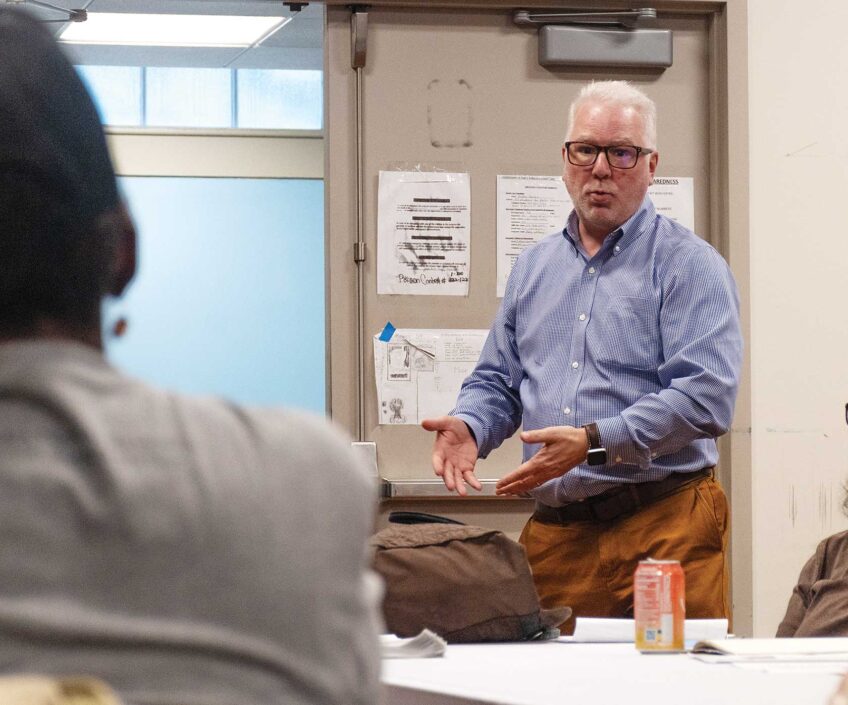Hayes’ class has done a number of lessons on bird watching, as well as water and soil testing.
Renayssa Pimentel, 17, takes the bus to Charlestown High from Dorchester. She enjoys these lessons, she explained, “[because] we learn in a different way when we’re outside.”
And they are definitely learning. Gerald Nwosu, 17, spoke seriously about how in their bird watching lesson, they saw a lot of rock doves, a type of bird that city dwellers most likely know by a different name:
Pigeons.
“Yeah, rock dove is their scientific name,” he said, adding that “a lot of birds can’t adapt to this environment, so [in the city] we see less species-richness.”
UEI’s focus on the needs of urban students and their teachers has led the organization to develop a curriculum on environmental justice and injustice: how power and poverty determine which communities suffer environmental hazards, and which do not.
Brooke Spencer, 33, teaches at the Urban Science Academy at West Roxbury High School. Part of the team that created the academy three years ago, Spencer said she believes her students do suffer from environmental injustice.
“A lot of them have asthma, which is related to where they live,” said Spencer. “There are brownfields [toxic waste dump sites] in their neighborhoods.”
Yara Marquez, 18, just had her name tattooed on the back of her neck. She lives near and studies at Charlestown High School. She feels grateful to be “outside the city.”
Marquez feels like she’s better off than kids from Boston when it comes to environmental health.
“They fixed up this park,” she said of the football field across from the high school, “and the water is mad soothing if you want to get away.”
Her friend, Fong Nguyen, 17, who busses in from Dorchester, agrees.
“Where I come from, they don’t care if it’s dirty or not,” she said. “At least over here [at Charlestown], they have a park where they care if it’s clean.”
Some students at the Urban Science Academy demonstrated their understanding of the material by writing hip-hop songs as part of an interactive multimedia Web site about environmental justice.
One student named Bernard wrote, “Rich people don’t care / Pollution in the air / All they do is stare…”
On the Web site, a number of the students expressed interest in possibly pursuing “green jobs” this summer. Bernard said he wants to work with The Food Project to de-lead the land he lives on and grow food for his community.
The transformation triggered by the environmental justice curriculum is very real.
“These are tough kids,” said Susan Agger, a teacher at the Maynard Ecology Center in Cambridge. ”At first, they can’t be bothered, but then they end up forgetting themselves … they become [like] 7-year-olds, catching butterflies, getting lost chasing a frog.”
The Urban Science Academy’s final projects can be viewed at www.ejmedia.org/ej@usa.html.






